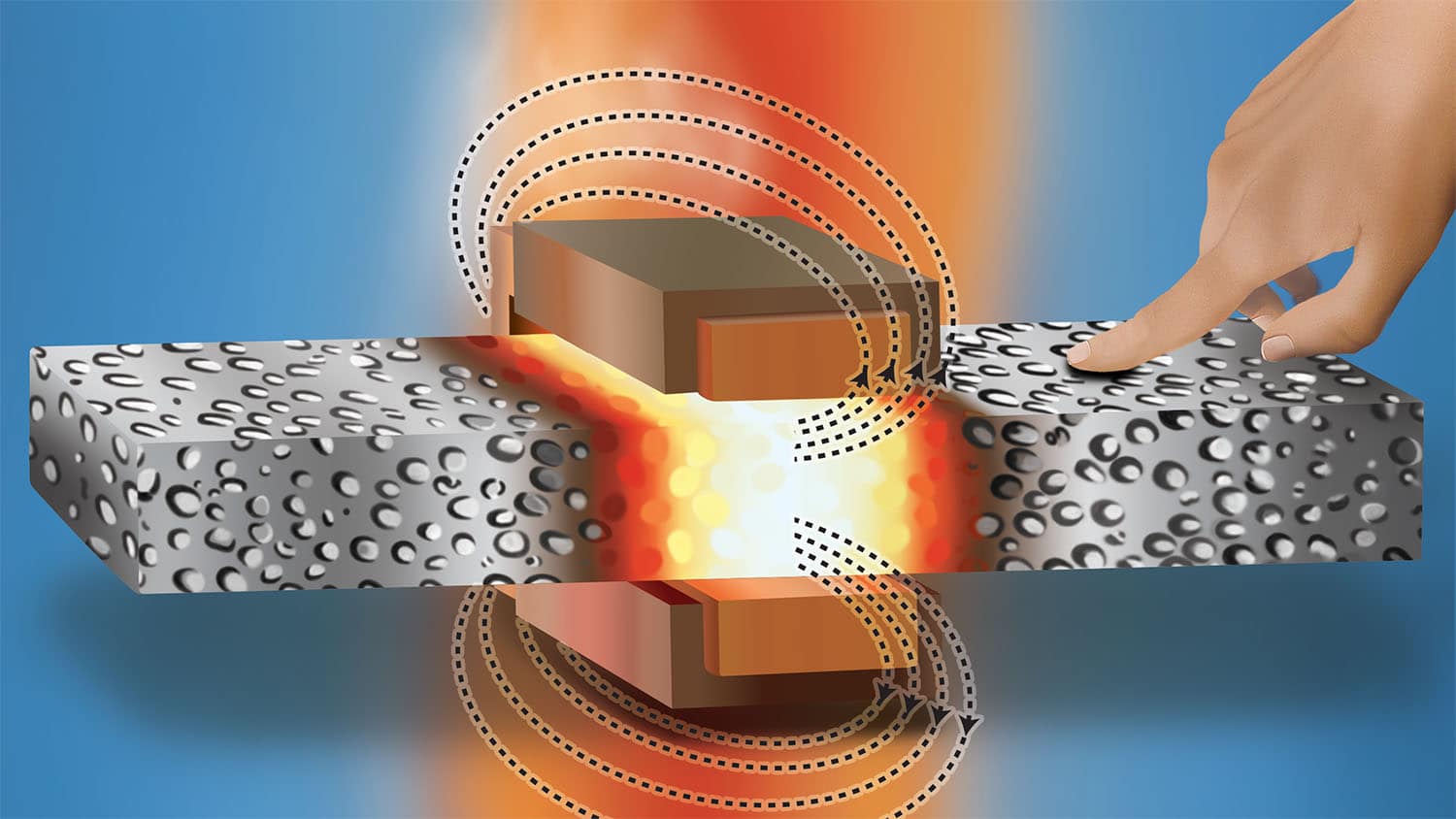For Immediate Release
Researchers at North Carolina State University have now identified a welding technique that can be used to join composite metal foam (CMF) components together without impairing the properties that make CMF desirable. CMFs hold promise for a wide array of applications because the pockets of air they contain make them light, strong and effective at insulating against high temperatures.
CMFs are foams that consist of hollow, metallic spheres – made of materials such as stainless steel or titanium – embedded in a metallic matrix made of steel, titanium, aluminum or other metallic alloys. The resulting material is both lightweight and remarkably strong, with potential applications ranging from aircraft wings to vehicle armor and body armor.
In addition, CMF is better at insulating against high heat than conventional metals and alloys, such as steel. The combination of weight, strength and thermal insulation means that CMF also holds promise for use in storing and transporting nuclear material, hazardous materials, explosives and other heat-sensitive materials.
However, in order to realize many of these applications, manufacturers would need to weld multiple CMF components together. And that has posed a problem.
“Traditional fusion welding uses a filler to connect two pieces of metal,” says Afsaneh Rabiei, corresponding author of a paper on the new research and professor of mechanical and aerospace engineering at NC State. “This is problematic, because the metal being melted to fuse two pieces of CMF is solid, so it lacks the desirable properties of the CMF on either side of it. In addition, any type of welding that uses direct heat to melt the metal results in some of the porosity in the CMF being filled in, which impairs its properties. In short, that means that most forms of traditional welding don’t work well with metal foams.”
However, the researchers have now identified a form of welding that works very well. It’s called induction welding, and it uses an induction coil to create an electromagnetic field that heats the metal for welding.
“Because CMF is only 30-35% metal, the electromagnetic field is able to penetrate deeply into the material – allowing for a good weld,” Rabiei says. “The air pockets that make up the remaining 65-70% of the CMF serve to insulate the material against the heat. This allows induction welding to heat up the targeted area for joining two pieces of CMF, but prevents the heat from spreading out from the site of the join. That helps to preserve the CMF’s properties.
“This is an important step forward, because CMF’s properties make it attractive for a wide range of applications, but it’s essential to have a means of welding the CMF components without impairing the properties that make it attractive in the first place.”
The paper, “A Study on Welding of Porous Metals and Metallic Foams,” is published in the journal Advanced Engineering Materials. The paper was co-authored by John Cance and Zubin Chacko, Ph.D. students at NC State. The work was done with support from the U.S. Department of Transportation’s Pipeline and Hazardous Materials Safety Administration, under grant number PH957-20-0075.
-shipman-
Note to Editors: The study abstract follows.
“A Study on Welding of Porous Metals and Metallic Foams”
Authors: Afsaneh Rabiei, John Cance and Zubin Chacko, North Carolina State University
Published: Nov. 16, Advanced Engineering Materials
DOI: 10.1002/adem.202301430
Abstract: Metal foams are lightweight materials with exceptional impact energy absorption and unique thermal properties. Integrating these novel materials into large structural components requires developing appropriate welding techniques that preserve their bulk performance. Traditional fusion welding methods are ill-suited for metal foams due to their porous structure, which tends to be filled during welding, compromising performance. This study focuses on solid-state welding techniques, including friction stir welding (FSW) and induction welding, to join metal foams without adversely affecting their cellular structure. The results reveal challenges with FSW; it generates excessive heat during welding, filling the foam’s porosities and disrupting its cellular structure. In contrast, induction welding is an effective method for joining composite metal foam (CMF) panels without compromising their structural integrity. The matrix between the porosities in CMF facilitates the penetration of eddy current, promoting the induction welding process. The mechanical properties of the weldments are studied through uniaxial tensile tests, while microstructural characterization of the weldment is evaluated using scanning electron microscopy. The results provide insight into the effect of various welding parameters (e.g., welding temperature, workpiece thickness, and welding environment) as well as the suitability and restrictions of such welding methods in joining CMFs.



